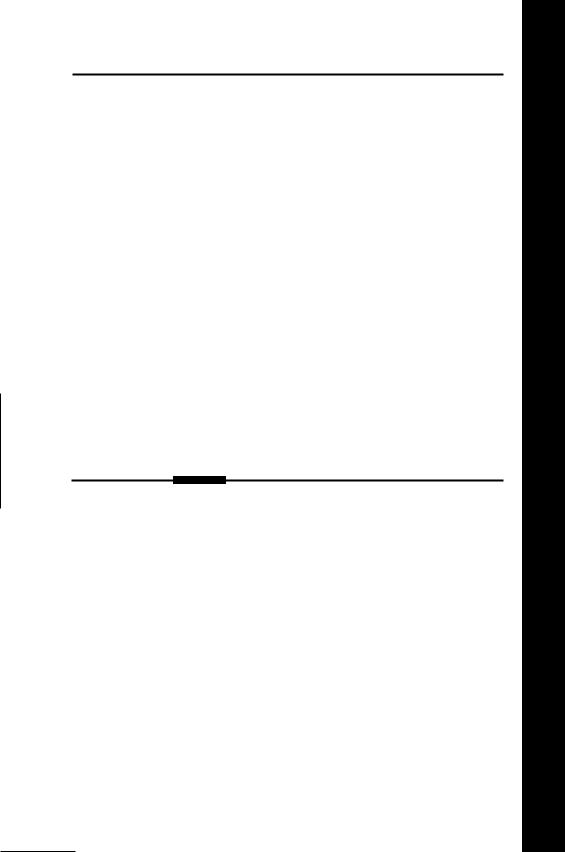
Английский язык / Английский язык для медиков / Swales John M., Feak Christine B. Academic Writing for Graduate Students. Essential Tasks and Skills
.pdf
8: CONSTRUCTING A RESEARCH PAPER II |
349 |
|
2J |
?7Y &.MddL £ |
2 |
TASK TWELVE
Here are eight Move 2 statements regarding the self-citation research. Wonld you characterize them as A, B, C, or 0 from Figure 17? There are two of each.
1.These findings suggest that the nnmber of co-authors might affect the self-citation rate.
2.However, in all three cases, the methodologies used for analyzing self-citations are flawed.
3.One discipline that has been neglected in self-citation studies is history.
4.Studies so far lead to a question that has as yet no clear answer: Do self-citations pay?
5.It would therefore be interesting to have further informa- tion about the citation practices of Norwegian scientists.
6.That said, little is known about how many times individual authors cite their earlier publications.
7.Recent arguments (e.g., Fowler and Aksnes, 2007) for excluding self-citations from performance assessments rest on a number of false assumptions.
8.There is obviously value in extending these studies to cover more disciplines.
Of the four Move 2 options, gap-indications are very common in many
fields. Option 0, however, is typically chosen by research groups in sciences and Engineering as they offer refinements and exrensions of rheir previous work. This is a case of the common "adding anorher brick to rhe wall of knowledge" metaphor. At rhe other pole, regular employment of counterclaiming is only likely in contesred areas such as Philosophy and Law. Since Option B is widely used, we now explore it a little further.

350 |
ACADEMIC WRITING FOR GRADUATE STUDENTS |
~ Language Focus: Negative Openings in Move 2
Probably the most common way to indicate a gap is to use a "quasi-negative" subject. Presumably, such subjects are chosen because they signal immediately to the reader that Move 1 has come to an end. Note the uses of little
andfow.
Non-count |
However, little information ... |
|
Little attention ... |
|
Little work .. . |
|
Little data .. . |
|
Little research ... |
Count |
However, few studies .. . |
|
Few investigations .. . |
|
Few researchers .. . |
|
Few attempts .. . |
Note the differences in the following pairs.
There is little research. (negative, i.e., not enough)
There is a little research. (neutral, i.e., maybe enough)
The department has few computers. (negative, i.e., not enough) The department has a few computers. (neutral, i.e., maybe enough)
Note also the use of no/none of
No studies/data/calculations to date have ....
None of these studies/findings/calculations have ....
Use no when your conclusion is based on (but does not directly refer to) the
cited literature. If you want to refer directly to the previous research, use
none of
However, you may want to avoid using a full negative like no studies;
chances are that somebody will find an exception to your strong statement.
Alternatively, you could add To the best ofour knowledge, ...

8: CONSTRUCTING A RESEARCH PAPER II |
351 |
M
TASK THIRTEEN
Here are some "negative') verbs and adjectives that tend to cluster in
Move 2. Work with a partner and decide how "negative" they are. Mark them as seeming definitely or strongly negative (- -) or only slightly negative (-).
Verbs
However, previous research on deforestation has ____
a. concentrated on |
- g . neglected to consider |
||
b. disregarded |
h. overestimated |
||
c. |
failed to consider |
i. |
overlooked |
d. |
ignored |
- j . been restricted to |
|
e. |
been limited to |
k. suffered from |
|
f. |
misinterpreted |
I. |
underestimated |
Adjectives
Nevertheless, these attempts to establish a link between dental fillings and disease are at present ________
|
a. |
controversial |
e. |
qnestionable |
|
|
|
b. |
incomplete |
f. |
unconvincing |
|
|
|
c. inconclusive |
- g . unsatisfactory |
|
|
||
|
d. misguided |
h. ambivalent |
|
|
||
ilI!! |
1_.,~ |
!0li@Wna! |
, |
, |
||


8: CONSTRUCTING A RESEARCH PAPER II |
353 |
As you will see, discussion of previous work is spread out and handled in two paragraphs. One method is discussed in Sentence 3 and critiqued in Sentence 4, while the second method is critiqued in Sentence 11.
IT li |
- |
j . |
d |
|
|
|
Read part of the Introduction section for the energy harvesting text (containing Move 2) and then answer the questions on page 354.
Soft Capacitors for Wave Energy Harvesting
Ahnert, K., Abel, M., Kollosche, M.,
J0rgen J0rgensen, P., and Kofod, C. (2011).
Journal of Materials Chemistry, 21, 13392-14497.
o The problem of adequately supplying the world with clean, renewable energy is among the most urgent today. 8 It is crucial to evaluate alternatives to conventional techniques. 8 One possibility is energy harvesting from ocean waves, which has been proposed as a means of offsetting a large portion of the world's electrical energy demands. I e However, the practical implementation of wave energy harvesting has met with obstacles, and the development of new methods is necessary.' 0 Oceanic waves have large amplitude fiuctuations that cause devices to fail due to excessive wear or during storms. (3 A strategy to overcome these catastrophic events could be to base the harvesting mechanisms on soft materials.
e Soft, stretchable rubber capacitors are possible candidates
for energy harvesting,3-8 that have already been tested in a realistic ocean setting.9 •ID fl}They were originally introduced as actuators,"-14 capable of high actuation strains of more than 100% and stresses of more than 1 MPa. 0 With a soft capacitor, mechanical energy
can be used to pump charges from a low electrical potential Uta a higher one, such that the electrical energy difference can be harvested. 3 ED This is made possible by the large changes of
capacitance under mechanical deformation. GI Although the method is simple and proven,3-IO it is still not clear to what extent the approach is practically useful, which is the concern of this paper.
GI Of the many electro-active polymers, it appears that soft capacitors could have the highest energy densities.1S
Copyright Royal Society of Chemistry. Used with permission.

354 |
ACADEMIC WRITING FOR GRADUATE STUDENTS |
1.How many "critique" expressions can you find in the passage?
Underline or highlight them.
2.Look back at Task Thirteen. Are these phrases strongly negative or slightly negative?
3.What word signals that Move 1 has ended and Move 2 has started? What other words or expressions conld also indicate this shift?
4.Can you now anticipate what Sentence 13 will do?
We can see a slightly different case in the Move 2 of the bridges Introduction (see pages 335-336).
Do you agree (A) or disagree (D) with these comments? Mark (?) if you are unsure.
1.The first reference (Inaudi et al., 2009) helps to establish the seriousness of the problem and therefore has a different function to the others.
2.Earlier Swales and Fealr said that this Move 2 paragraph was a subtle form of gap indication. In fact, it fits better with the "continuing a tradition" option. SHM monitoring in Sentence 4 contains references, but durability monitoring in Sentence 5 does not. This is because
__ there is no published research on this topic.
__ the authors simply forgot.
__ durability monitoring is the topic of this paper.
|
Of some other reason. |
3. The use of can in Sentences 4 and 5 indicates |
|
_ |
that both kinds of monitoring are able to get the job |
|
done. |
_ |
that both kinds only have a potential to get the job |
|
done. |
|
|

8: CONSTRUCTING A RESEARCH PAPER II |
355 |
Occupying the Niche
The thitd and final step in the typical RP Introduction is to make an offet to fill the gap (ot extend the tradition) that has been cteated in Move 2. The
first element in Move 3 is obligatory. It has two main variants:
Putposive (P) The author or authors indicate their main purpose or
purposes.
or
Descriptive (D) The author or authots desctibe the main feature of
their research.
TASK FIFTEEN
Here ate the beginnings of ten opening Move 3 sentences. Decide in each case whether they are purposive (P) or descriptive (D). The first two have been done for you. Complete at least three of
the sentences.
~p_ 1. The aim of the present paper is to give ... .
'D 2. This paper reports on the results obtained ... .
3.In this paper we give preliminary tesults fat ... .
4.The main purpose of the experiment reported here was to
5.This study was designed to evaluate ....
6.The present work extends the use of the last model ....
7.We now report the interaction between ... .
8.The primary focus of this paper is on ... .
9.The aim of this investigation was to test ... .
10.Our ptimary objective in this paper is to provide ....

3S6 |
ACADEMIC WRITING FOR GRADUATE STUDENTS |
Note that Move 3 is typically signaled by some reference to the present text, such as the uses of this, the present, reported, and here. If the conventions of the field or journal allow, it is also common for the authors to switch from the impersonal to the personal by using we or, more rarely, I Also note that
metadiscoursal references come early in the sentence. It is more common to
find
In this paper we present the results of three experiments.
rather than
We present the results of three experiments in this paper.
~ Language Focus: Purpose Statements and Tense
Students sometimes ask us whether they should use was or is in purpose statements. Indeed, both were used in the phrases in Task Fifteen. The answer to this question depends on how you refer to your work. You have two choices.
1. Referring to the type of text (or gente}-paper, article, thesis, report, research note, etc.
2.Referring to the type of investigation-experiment, investigation, study, survey, etc.
If you choose to refer to the type of text, present tense is quite common. If you write The aim ofthis paper was to ... in some fields, this would mean that you are referring to an original aim that has now changed. In other fields, such as Biomedical Research, was is typical and simply refers to the aim when the research was conducted.
If you choose to refer to the type of investigation, you can use either was
Of is. However, there is an increasing tendency to choose the present, per-
haps because it makes the research seem relevant and fresh and new. A safe rule here is to check the journal in which you want to publish your paper to determine the tendency.

8: CONSTRUCTING A RESEARCH PAPER II |
357 |
Completing an Introduction
Sometimes more than one sentence is necessary to complete Move 3a, as in
Sentence b from the paper in Task Five. Here are two examples of Move 3, one from a paper entitled "The Development of Culturally-Sensitive Measures for Research on Ageing" and the other from an Aerospace Engineering article entitled "High Angle-of-Attack Calculations of the Subsonic Vortex Flow in Slender Bodies."
In this paper, I describe a field test of Krause's multi-method approach to the construction of a culturally-grounded measure for older people in Thailand. A step-by-step elucidation of the approach is presented, as well as an examination of the benefits and problems associated with this mixed-method approach. In addition, the paper discusses issues that gerontology researchers should consider when deciding whether and how to develop a measure that is grounded in the culture for which it is intended.
lngersoll"Dayton, 2011.
The present work extends the use of the last model to asymmetric, body-vortex cases, thus increasing the range of flow patterns that can be investigated. In addition, an effort is made to improve the numerical procedure to accelerate the convergence of the iterative solution and to get a better rollup of the vortex lines representing the wake.
Almosnino, 1984.
These secondary statements are often introduced by such language as
In addition, .. .
Additionallv. .. .
A secondary aim ... .
A further reason for . .. .

358 |
ACADEMIC WRITING FOR GRADUATE STUDENTS |
|
Wy |
l&.;& |
|
TASK SIXTEEN |
||
|
||
|
|
Revise your Move 3a (Task Four). Be creative in terms of the research project you might undertake.
Read the table, which provides the Google Scholar hits for some Move 3a expressions obtained in May 2012. Then update the results for today's date. What might you conclude from both sets of figures? Look at some of the first examples for the was to and the has been to entries. Can you draw any conclusions?
|
Expression |
Hits Spring |
Hits Now |
|
|
|
2012 |
|
|||
|
|
|
|
|
|
|
The purpose of this paper is to . |
340,000 |
|
|
|
|
|
|
|
|
|
|
The purpose of this paper was to . .. |
19,300 |
|
|
|
|
|
|
|
|
|
|
The purpose of this paper has been to . |
6,300 |
|
|
|
|
|
|
|
|
|
|
The purpose of this paper will be to . |
1,780 |
|
|
|
|
|
|
|
|
|
|
The purpose of the present paper is to . |
66,000 |
|
|
|
|
|
|
|
|
|
|
The purpose of the present paper was to .. |
2,410 |
|
|
|
|
|
|
|
|
|
|
The purpose of the present paper has been to . |
248 |
|
|
|
|
|
|
|
|
|
|
The purpose of the present paper will be to ... |
65 |
|
|
|
|
|
|
|
|
|
|
E' ! I |
reB |
|
|
|
In Figure 16 we listed four other elements that can be found at the end of Introduction sections. (There may be others, such as a depiction of the statistical measures employed.) The four elements are arranged in the most likely order of occurrence.
3b. by listing research questions or hypotheses
3c. by annonncing principal findings
3d. by stating the value of the present research
3e. by indicating the structure of the RF
In all cases, remember the acronym PISF (probable in some fields but not in others).
